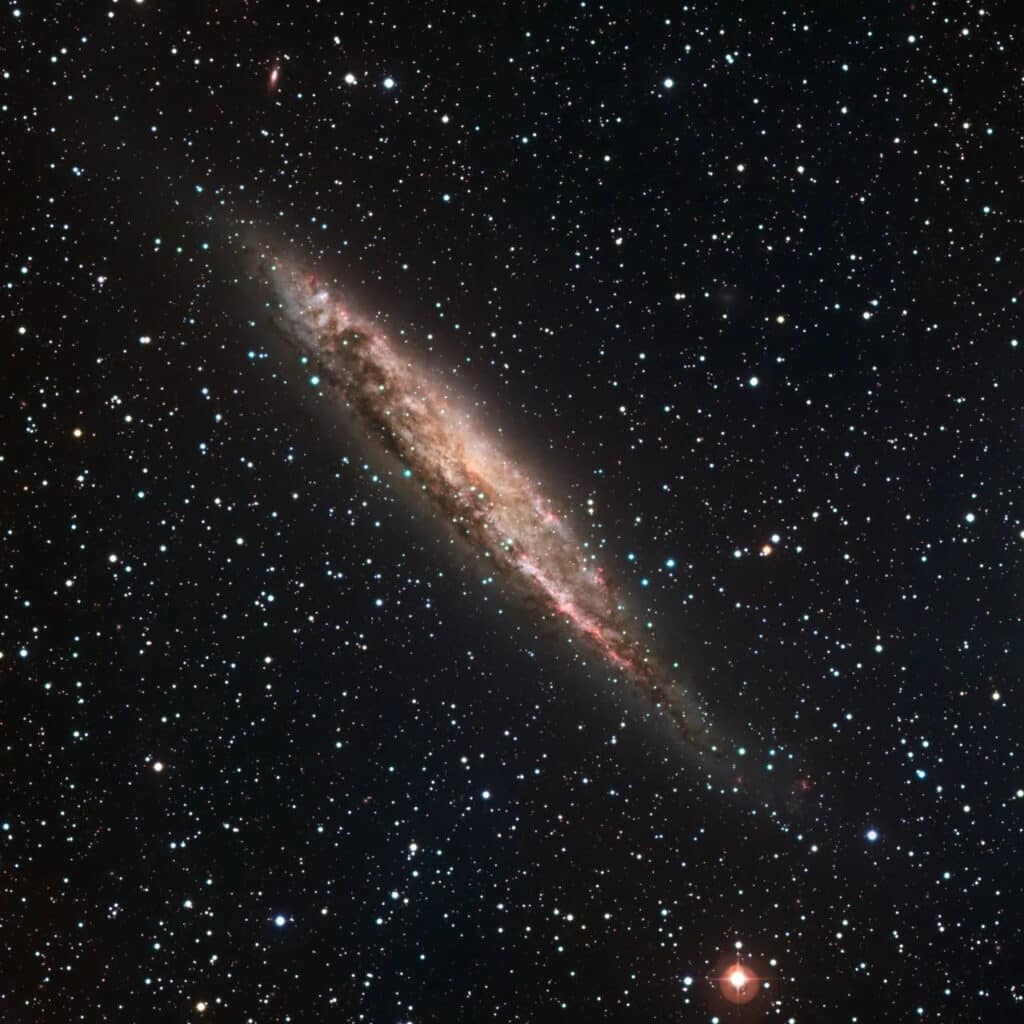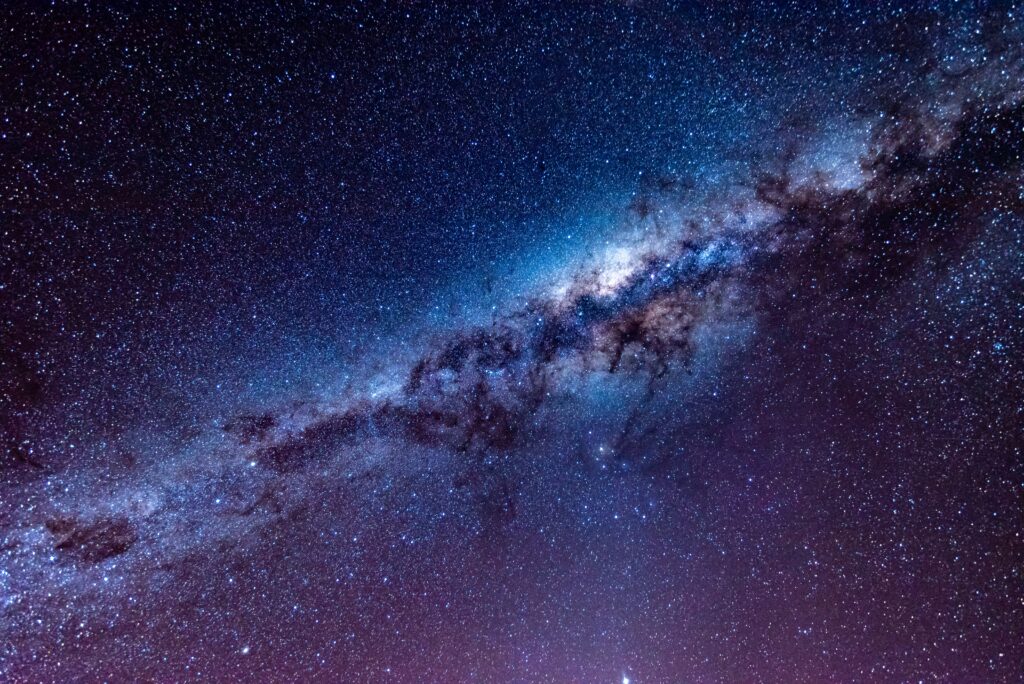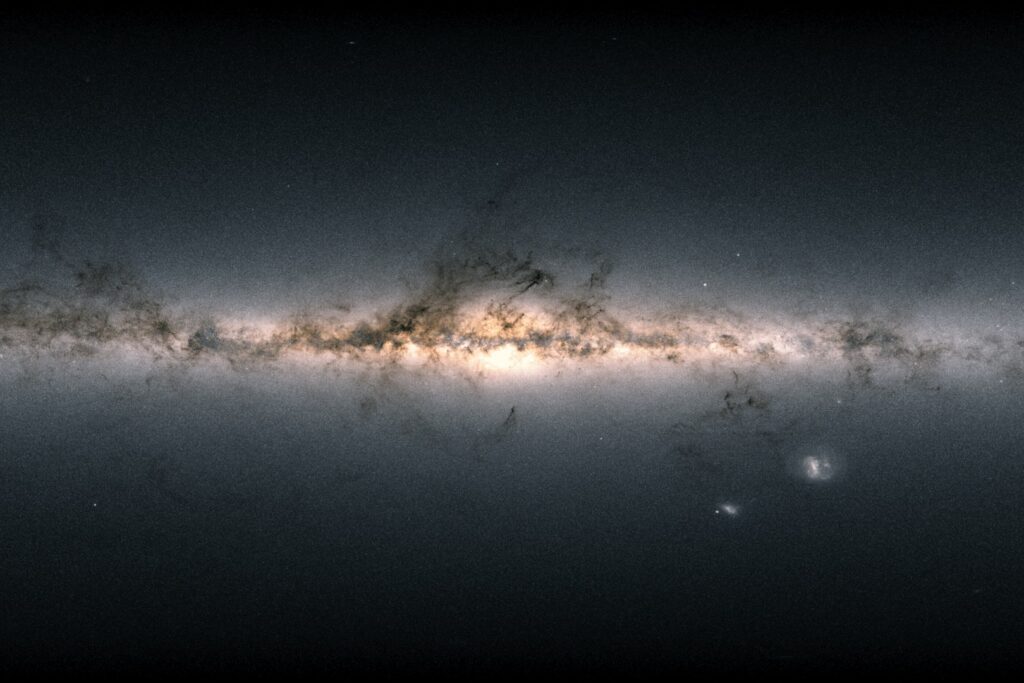Our understanding of the Milky Way galaxy may be forever changed after this latest discovery. While analyzing the speed of stars across the galaxy, physicists at the Massachusetts Institute of Technology (MIT) found that stars further from the galactic center are moving slower than expected. This finding hints at a lighter gravitational core and less dark matter in the Milky Way than previously believed.
The research involved studying over 33,000 stars using data from two major astronomical instruments: the Gaia space telescope and the Apache Point Observatory Galactic Evolution Experiment (APOGEE). Gaia tracks the location, distance, and motion of more than a billion stars, while APOGEE, a ground-based survey, provides detailed properties of stars.
The MIT team focused on determining the “circular velocity” of each star, which is how fast a star is orbiting in the galactic disk based on its distance from the galaxy’s center.

Astronomers use a “rotation curve” to understand a galaxy’s composition. It shows how fast matter rotates at different distances from a galaxy’s center, revealing the distribution of visible and dark matter.
“What we were really surprised to see was that this curve remained flat, flat, flat out to a certain distance, and then it started tanking,” says study co-author Lina Necib, assistant professor of physics at MIT, in a media release. “This means the outer stars are rotating a little slower than expected, which is a very surprising result.”
When researchers translated this new rotation curve into a map of dark matter distribution, they found a lighter galactic core than expected. This contradicts previous assumptions about the density of dark matter at the Milky Way’s center.
“This puts this result in tension with other measurements,” explains Necib. “There is something fishy going on somewhere, and it’s really exciting to figure out where that is, to really have a coherent picture of the Milky Way.”

The discovery builds on the pioneering work of astronomer Vera Rubin in the 1970s. Rubin’s observations of flat rotation curves in galaxies were among the first strong pieces of evidence for the existence of dark matter, an invisible entity believed to outweigh all visible matter in the universe.
The MIT study challenges previous findings, which suggested a flat rotation curve with a mild decline, indicating a high density of dark matter at the galaxy’s core. However, the new data includes stars as far as 30 kiloparsecs (almost 100,000 light-years) from the galaxy’s center, revealing a different picture.
“At these distances, we’re right at the edge of the galaxy where stars start to peter out,” notes study co-author Anna Frebel, professor of physics at MIT. “No one had explored how matter moves around in this outer galaxy, where we’re really in the nothingness.”
This unexpected finding suggests that our understanding of the Milky Way, particularly its dark matter content, might need revising.

“This result is in tension with other measurements,” concludes Necib. “Really understanding this result will have deep repercussions. This might lead to more hidden masses just beyond the edge of the galactic disk, or a reconsideration of the state of equilibrium of our galaxy. We seek to find these answers in upcoming work, using high resolution simulations of Milky Way-like galaxies.”
The team’s future work, supported in part by the National Science Foundation, aims to explore these mysteries further, possibly leading to new insights into the structure and equilibrium of our galaxy.
The study is published in the journal Monthly Notices of the Royal Astronomical Society.












